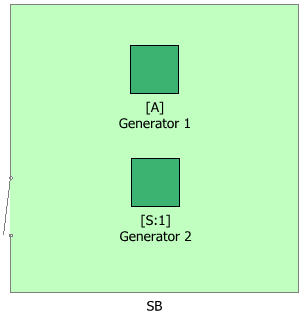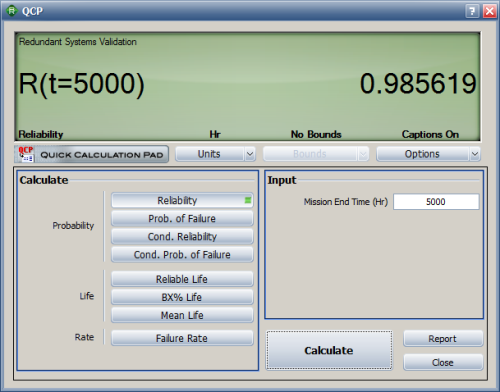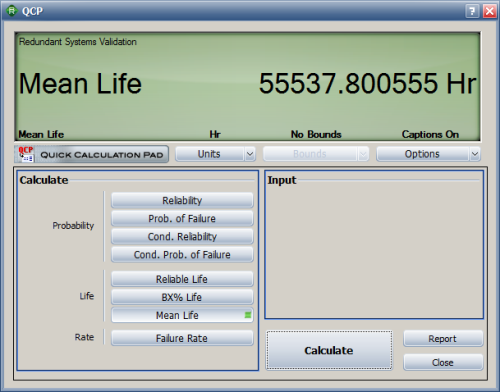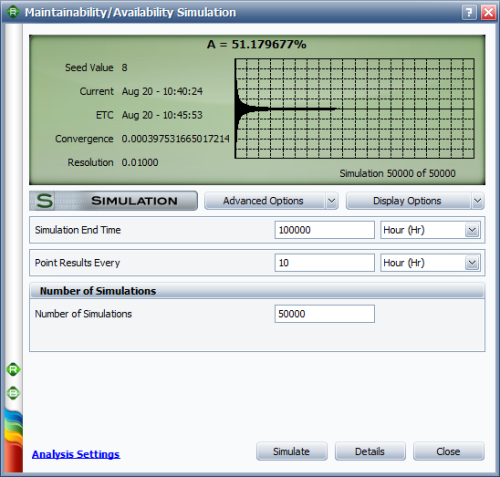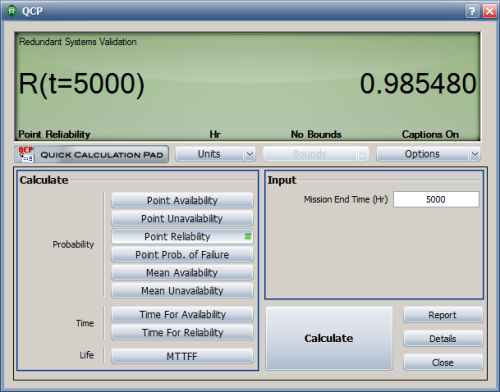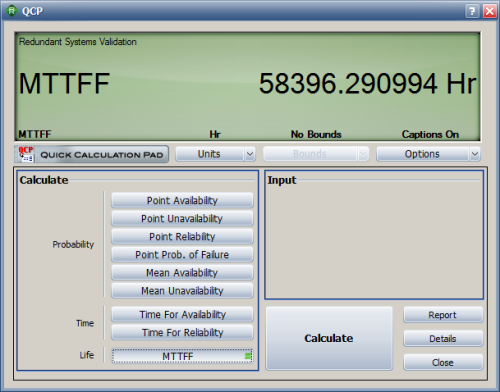Redundant Systems RBD
This example validates the results for redundant systems in BlockSim's analytical and simulation diagrams.
Reference Case
The data set is from example 4.7 on page 81 in the book Life Cycle Reliability Engineering by Dr. Guangbin Yang, John Wiley & Sons, 2007.
Data
A small power plant is equipped with two identical generators in a cold standby system configuration. Hence, the standby generator starts working as soon as the active generator fails. The assumptions are that there are no interruptions between switches and that the switching system is 100% reliable. Each generator follows an exponential life distribution with a failure rate (lambda) of 3.6 × 10-5 failures per hour. The reliability of the power plant at 5000 hours and the mean time to failure (MMTF) are calculated.
Result
Substituting the lambda and time into Equation 4.31 on page 81, the reliability of the system is calculated as 98.56% at time 5000 hours.
By setting n = 2 in Equation 4.30 on page 81, the mean time to failure is calculated as 5.56 x 104 hours.
Results in BlockSim
In BlockSim, the generator system RBD is configured as shown below.
Each generator is modeled using an exponential distribution with a failure rate (lambda) of 3.6 x 10-5 failures per hour.
Analytical Proof
The reliability of the system at 5,000 hours is calculated in the QCP as 98.56%
The mean time to failure (MTTF) is calculated as 5.55 x 104 hours.
Simulation Proof
We can also estimate the results by using the simulation tool in BlockSim. The simulation settings are shown below.
The point reliability of the system at 5,000 hours is calculated in the QCP as 98.55%
The mean time to failure (MTTF) is calculated as 5.84 x 104 hours.

